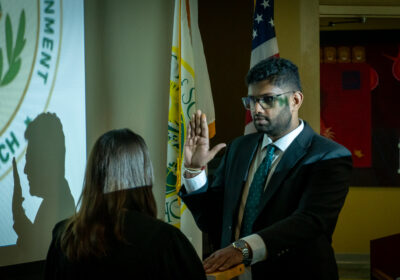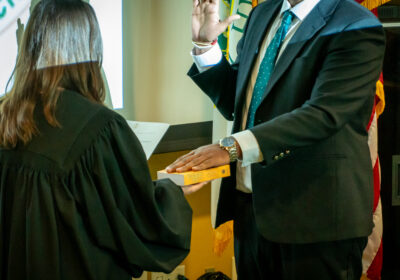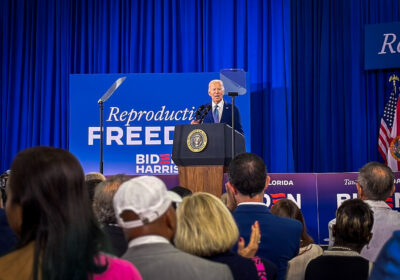Judge temporarily places motions on hold in INTO USF case

On Wednesday afternoon, Judge Darren Farfante dismissed the motions filed by plaintiff USF Financing Corporation (USFFC) and defendant INTO USF without prejudice, allowing them to be brought back to court at a later date.
The motion filed by USFFC asked the court to declare it as the winning party in a previous declaratory judgment hearing which sought to resolve legal uncertainties between the two parties. INTO’s motion asked for it to be declared the prevailing side.
Taking place over Zoom, the hearing lasted over one hour. After hearing the plaintiff’s and defendant’s arguments and rebuttals, Farfante held both the motions in abeyance – meaning they are temporarily placed on hold until all matters are resolved – and deemed the motions premature.
The hearing comes after an initial lawsuit was filed by USFFC against INTO on July 15, 2022 because INTO entities ignored a termination letter of the university service agreement (USA), according to the plaintiff’s attorney Hala Sandridge. Instead of initiating a process to close the program – known as the teach out and wind up process – required by the shareholder agreement after the April 21, 2022 termination of the program, INTO kept operating and recruiting for the Pathways program, according to Sandridge.
As part of its lawsuit, USFFC asked the court to find the stockholders agreement (SHA) – which outlines how a company must operate and sets out the shareholders’ rights and obligations – automatically terminated. This case consolidated with another case filed by INTO USF against the USFFC in August 2022 due to breach of contract, according to an April 26 Oracle article.
Sandridge said a plaintiff’s dismissal of their own complaint will usually render a defendant the prevailing party – in this case, INTO USF. However, she said there is an exception for this general rule that applies when the voluntary dismissal of the case occurs because the defendants’ actions mooted the case – meaning when the court can not productively do anything to resolve the case – which Sandridge argued can be applied here.
The declaratory judgment action filed by the USFFC did not serve a purpose after the INTO entities “engaged in all the conduct the lawsuit sought” such as initiating the teach out, Sandridge said. Thus, the USFFC dismissed its lawsuit and, under the law, it is considered the prevailing party, according to Sandridge.
She also claimed the INTO entities mooted the case when they elicited evidence through testimony that the SHA had been terminated and that INTO entities had been preparing for the teach out process in a December receivership hearing. During the hearing, Paul Singerman, INTO’s wind up counsel, testified that the closing process for INTO had begun, according to Sandridge.
By doing this, INTO entities proved what the USFFC had asked the court to declare should happen – the teach out – was already in progress, according to Sandridge. Because of this, she said it became moot.
Representing the opposing counsel, attorney Shawn Rabin said, under the default rule, it is undisputed that INTO is the prevailing party and that the exception rule did not apply in this case because it was the plaintiff’s actions, not the defendants’, that mooted the case. He said USF engaged in “self-help” before the court had a chance to rule in the declaratory judgment action.
The university did this through a July 29 email blast which “basically [declared]” the partnership terminated and prevented INTO from making any revenue, according to Rabin. He said INTO’s access into the USF system was restricted and they were no longer able to access the admission system and I-20 forms necessary for recruitment. These “unilateral actions” made the continuation of recruitment impossible, according to Rabin.
Sandridge argued neither the court nor USF forced the defendants’ to start the teach up or wind up process. She said the email sent out did not force INTO’s course of action and rather that they continued to defy the university after termination notice.
Besides proving it was the defendants’ actions which mooted the case, Rabin said the plaintiffs must show the case was mooted at all – which he argued it wasn’t because the declaratory judgment action dealt with solvency, meaning whether INTO USF would be able to pay its own debts. Only after answering the question of solvency, can the court determine whether termination occurred, he said.
Because there is no insolvency, Rabin said there is no automatic termination and the issue becomes “hotly contested” – not moot.
In order to determine the prevailing party, Rabin said one must also look to who was the victor of significant issues in the litigation. He argued in this case the significant issue was the December receivership hearing, which the USFFC lost.
Citing the case Tubbs v. Mechanik Nuccio, Rabin said he believed, instead of ruling in favor of a motion, the court should dismiss both the motions until the resolution of the second case on file for INTO and USFFC.
Farfante agreed with Rabin and deemed the motions premature. There are no details for another hearing on the case at the time of publication.






